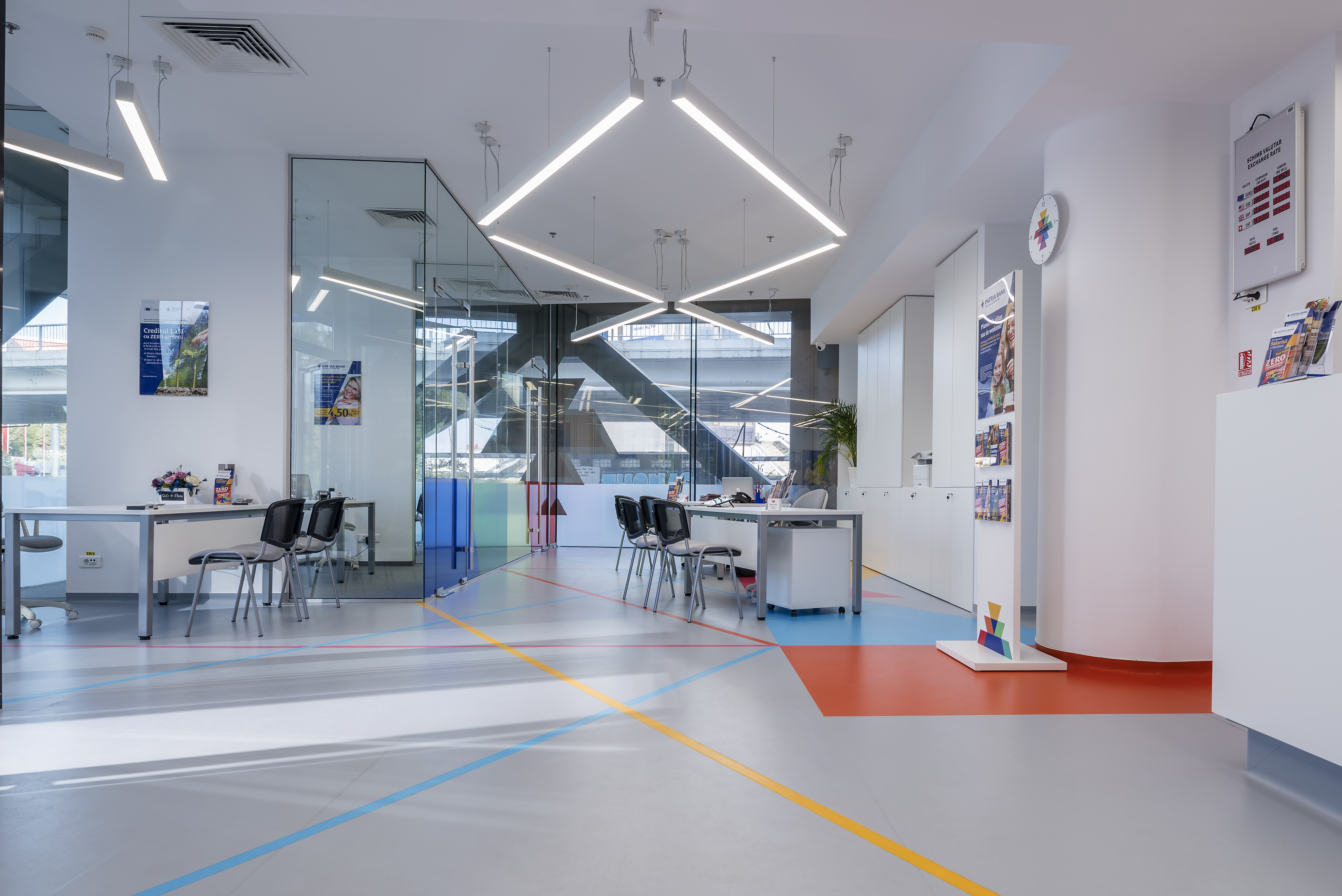
Offices must accommodate the smallest businesses with a handful of employees to the largest, corporate organisations with thousands of workers in dedicated high rise office blocks. In fact, the Shard, London’s 95 floor skyscraper standing 309 metres high, is currently the tallest office building in Western Europe. Compare it to a small, open plan office space and the diversity of office accommodation is well illustrated.
However, offices are not simply functional places where people work 9-5. For example, there are design, branding, image, comfort, acoustic, maintenance, health and safety, plus budgets to consider. And, as the average person spends twelve years of their life in a work space, with some spending two years round a corporate table, workplace wellness is increasingly becoming integral to how offices are planned.
Flexible, design-led offices that provide inspirational environments for people to thrive in, whatever the size, are important to how companies attract and retain staff and how well their workforce performs. Good décor, comfort, light, noise levels, air quality, well planned space and ideal flooring are some of the critical considerations when creating a good place to work in.
Creating people-orientated offices
Unsurprisingly, there is now a raft of office designers and architects focused on making the places we work in for as much as 50% of our waking hours per day better, healthier and more people-orientated places.
Trends include greater reflection of company values, vibrant spaces with more colour, increased bespoke elements, replacement of noisy, open-plan offices with private work spaces, pop up meeting and collaborative areas and social zones where people can engage, relax or brain-storm. As employers are becoming more aware of the physiological aspects of the work environment, the need to give people the right kind of space, space that appeals to both an ageing as well as a young workforce, is heightened.
People are generally known to connect with nature and to benefit from plenty of daylight and access to outdoor spaces. Interior spaces can also play a key role in promoting well-being by reflecting natural materials in decoration like wood, stone and ceramic effect floorings in warm and welcoming colours. Vinyl floorings that imitate nature are smart and stylish but also durable, quiet, safe and easy-to-maintain.
As the way we work changes so are the work spaces. To drive down cost and provide greater flexibility, co-working and shared working developments are a growing trend. Enabled by the digital age, this movement for combined living and working space may help cities to become more appealing to those who previously found city living unaffordable, as well as contributing to the work/life balance.
One example, The Collective in Canary Wharf, is considered one of the World’s largest co-living buildings comprising private and communal spaces with over 700 residents inspired by the need for community living and the business support it offers. Buildings like this require flexible flooring solutions in designs and finishes that are ideal for both domestic and communal living/working spaces.
The impact of an uncertain Brexit and the UK’s slow GDP growth is also making business owners more cautious about acquiring new offices leading to a potential increase in office refurbishments. Keeping offices open for business during renovation requires flexibility in building materials and loose-lay, quick fitting floorings that are designed for fast installation and easier reconfiguration, offer the best solutions.
Floorings that adapt to office trends
Floorings for new build and refurbishment office projects must therefore be suitable for the changing workspace. Design and colour play a vital role and LVT flooring comes in a plentiful choice from natural looks with modern twists and superior finishes to trend-setting designs for creating imaginative, powerful interiors. These floorings also lend themselves well to branding, multi-purpose and mobile working areas, zoning and promoting the movement and directional flow of a building through the innovative use of pattern and colour.
As LVTs are available with extra thick, durable wear layers, advanced, in-built surface treatments to protect from damage and differing specifications to meet the needs of light to heavy footfall, they enable the match of a design-driven flooring to the precise needs of an office project, whether small or large.
A popular choice in the office market are decorative LVTs that also come in different installation types including interlocking, loose-lay tiles and planks to allow for fast-track refurbishment over some existing floorings.
Loose-lay floorings of all suitable types for offices are also easily lifted and useful for future-proofing where reconfiguration is likely. In addition, loose-lay, compact acoustic floor tiles with cork underlay in fashionable designs and colours are an ideal solution for offices where an alternative to carpet with the performance of vinyl is required. Additionally, design-led vinyl safety floorings with superior slip resistance and good acoustic values provide re-assurance in busy risk areas.
High performance, design-orientated floorings suited for offices, which are manufactured to the highest environmental standards with low VOC emissions for a healthier environment, have the credentials to help offices work better for those that own, manage and work in them.
www.gerflor.co.uk./ 01926 622600 / email: contractuk@gerflor.com
